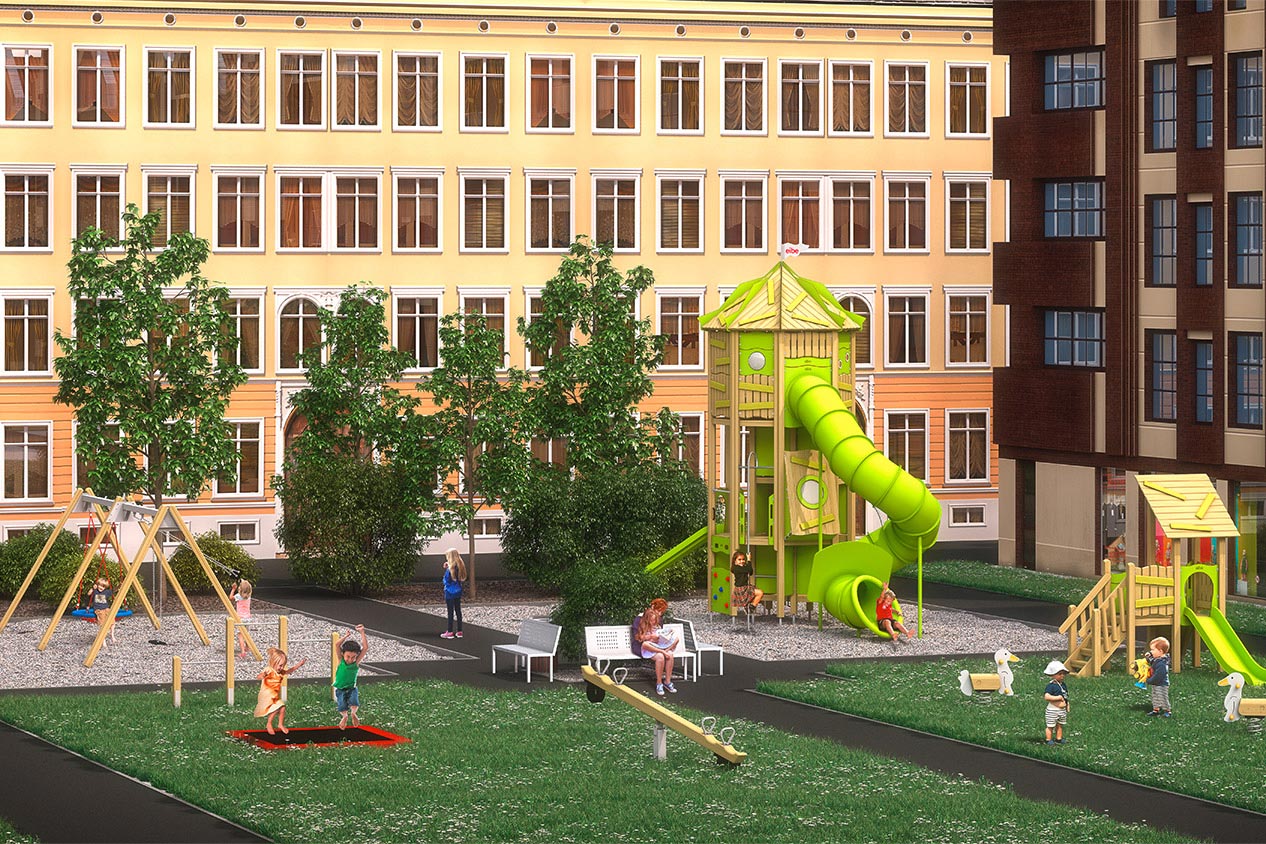Choosing the right playground equipment for the school is extremely important to guarantee the safety of pupils. For example, 10 million children and young people in Germany spend a large part of their day in general education schools 5 times a week. It is foreseeable that something will happen there from time to time. Physical education classes and playgrounds are the number one accident risk. It’s no wonder that some schools don’t like frolicking and running in the corridors or on the playground. Yet exercise is important and contributes significantly to better concentration and development of children. As soon as the bell rings, masses of pupils, flock outdoors to let off steam. It’s perfect when this happens in a natural, well-designed playground with a variety of opportunities for movement, recreation and retreat. However, playgrounds in schools require particularly careful planning to ensure the safety of those playing. This is because, in contrast to other structures, the playground is in constant use at maximum capacity.
Table of contents
- Incorrect or shallow playground planning increases the risk of accidents
- Thorough site planning is absolutely necessary for each area of the playground
- Playground equipment for the schoolyard: regular inspections are mandatory
- Who is liable in the event of an accident in the playground?
- Good playground planning
Incorrect or shallow playground planning increases the risk of accidents
It makes sense to plan playground equipment with the children in mind. But such an approach should also be approached professionally. If children unconsciously feel pressured by parents, they sometimes choose equipment they don’t even want. The consequences: They are either not used at all or used improperly. Playgrounds without real play value also provoke misuse – in both cases, there is a planning error that affects children’s safety. For this, planners must also think about the user groups. If the school playground can be used by the public outside school hours, it must be safe to play in without supervision.
Playground equipment must be adapted to the different age groups
Planners should adapt playground equipment to the age and abilities of the children. Too much parental ambition, for example, heavily pressurising the child to make a decision they don’t feel comfortable doing. They may only use the equipment out of peer pressure or misuse it because the actual use exceeds their abilities. For this reason, it is extremely important to separate playground equipment for different age groups. A piece of equipment for older children has no place in the area for younger children – it again encourages misuse and increases the safety risk.
Thorough site planning is imperative for every play facility
School playground equipment must be set up so that pupils can still play safely despite crowded play areas. The risk of collision of moving elements, even when used intensively, must be excluded: Especially in playgrounds with limited space, there is a danger that other children become moving targets when playing with balls, for example. In this case, ball guards and shields are absolutely necessary to protect the children. In principle, movement areas must be equipped with fall protection – such as under climbing towers. Even in open spaces, an asphalted surface poses a much higher risk of injury than a lawn or other appropriate flooring.
Playground equipment for the schoolyard: regular inspections are mandatory
The highly frequented use of a school play equipment by a large number of children requires regular safety inspections. The static integrity of scaffolding is particularly vulnerable due to frequent use and material wear is higher. Especially near-natural playgrounds should be maintained and serviced as often as possible – rot and decay are a danger, especially with wooden materials, and increase the risk of accidents. For schools, it is therefore advisable to look for certifications such as DIN EN 1176 when choosing a playground supplier: This playground equipment standard ensures from the outset that all playground equipment for the school playground meets current safety standards. The standard also requires regular inspections of the equipment.
Who is liable in the event of an accident in the playground?
The playground equipment has been chosen, all safety measures have been taken and yet an accident occurs? Don’t worry, even with the best safety precautions, accidents in the school playground cannot be completely ruled out. But who is liable if something happens? According to the German Federal Ministry of Labour and Social Affairs, the statutory accident insurance provides comprehensive cover for pupils during school hours. The statutory accident insurance also applies during breaks, as long as the child is within the school grounds – this also includes the schoolyard. Even during activities such as inline skating or snowball fights, which are sometimes forbidden by the school administration, the insurance cover remains in place in the event of an accident in the playground
Good school playground planning
Of course, choosing the right playground equipment for the school goes hand in hand with thoughtful planning. In these two blog posts, we have summarised for you what is important:
- Creative playground design – versatility is key
- Creative school playground design – pupils need movement

